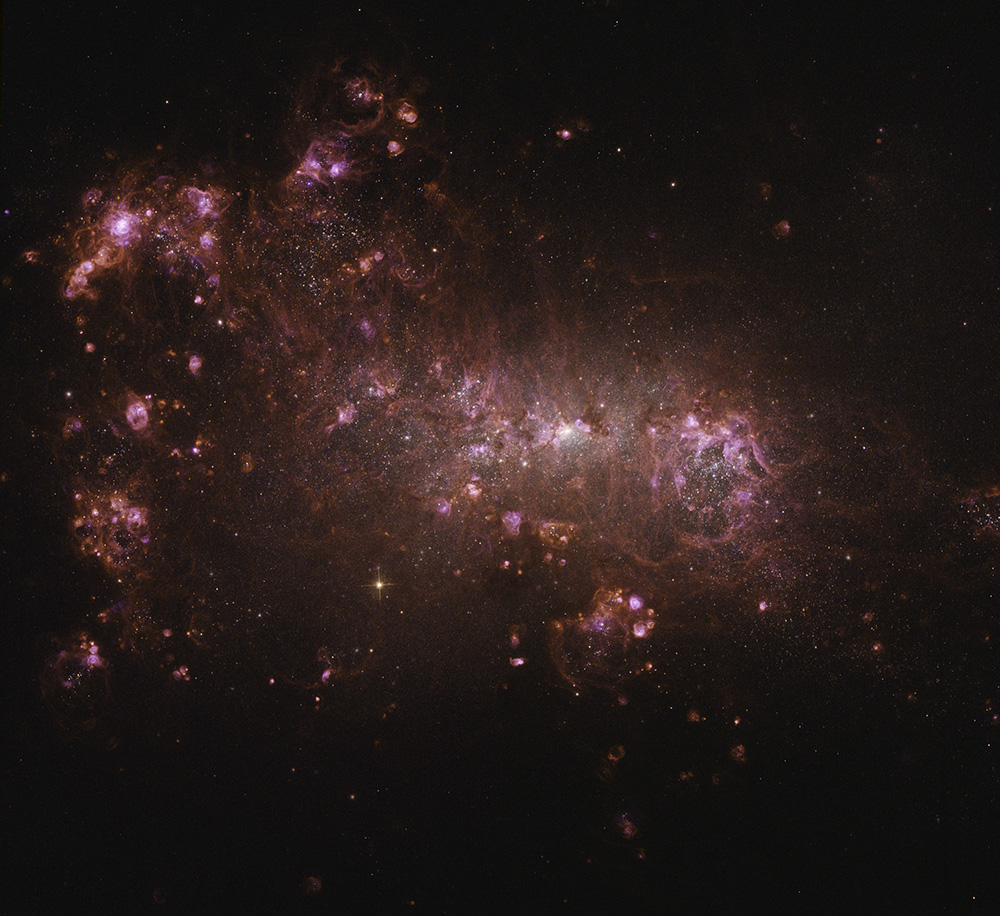
NGC 4449 (2014)
This is some wonderful narrowband imagery of NGC 4449 captured by Hubble back in 2005. When I first found this, I thought for sure it had already been processed somewhere along the line but all I could find was a wideband mosaic, which is here if you want to check it out. Rob Gendler did his own take as well, more strongly emphasizing the narrowband but still utilizing the wideband. The wideband imagery is nice but wow, is there a lot of amazing emission structure revealed with the narrowband data isolated. There are simple, smallish spheres, larger complex clouds, and down the center, streaming outwards like a ruptured fissure, is some massive work being done by the prodigious number of young stars radiating fiercely along the seam.
Red here represents areas of H-alpha and [N II] while slightly bluer areas show where [O III] emissions are also present. Mediumband green data (F550M) was also available and I used this to bring the stars to slightly more natural, whiter colors. Rather than maximizing differentiation between emissions, this time I applied more “realistic” colors. There’s so much overlapping that it hardly matters, anyhow.
Two HST Proposals are associated with these data:
NGC 4449: a Testbed for Starbursts in the Low- and High-Redshift Universe
Calibrating Star Formation: The Link between Feedback and Galaxy Evolution
Red: HST_10522_01_ACS_WFC_F660N_sci + HST_10585_03_ACS_WFC_F658N_sci
Green: HST_10585_03_ACS_WFC_F658N_sci + HST_10522_01_ACS_WFC_F550M_sci
Blue: HST_10522_01_ACS_WFC_F502N_sci1
North is NOT up. It is 47.5° counter-clockwise from up.
Copyright information:
Hubble data is public domain, but I put a lot of work into combining it into beautiful color images. The minimal credit line should read: NASA / ESA / J. Schmidt

This work is licensed under a Creative Commons Attribution 3.0 Unported License.


